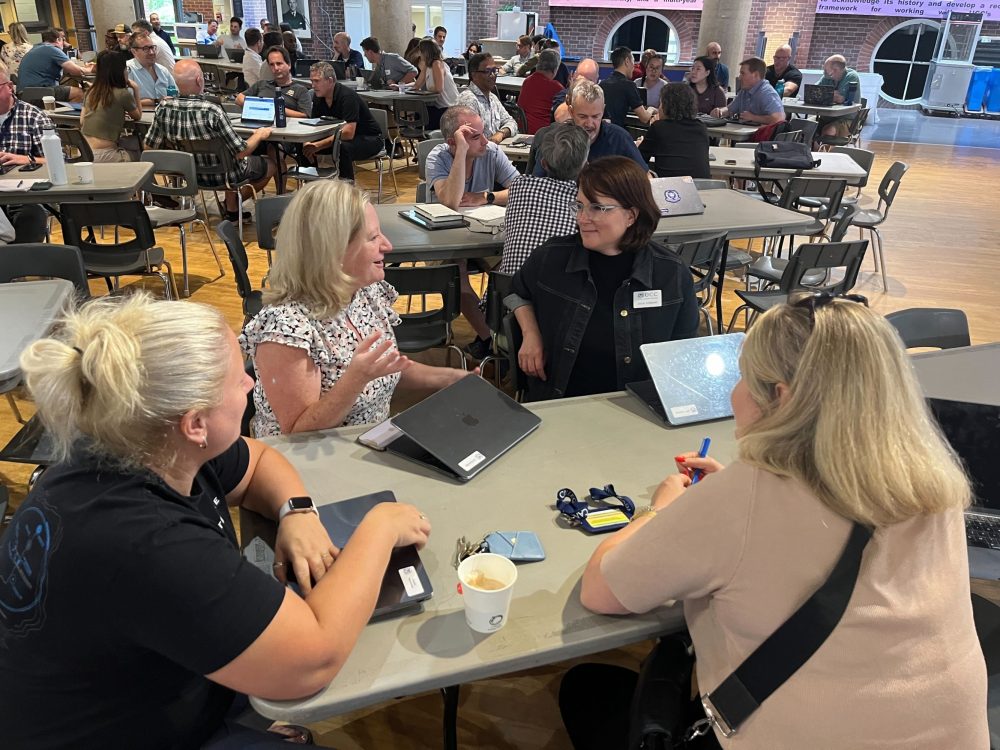Embracing Technology to Strengthen Human Connections in Schools
In a conversation with a GOA faculty member, Aubry Burr, who teaches at Colegio Maya School in Guatemala, I learned about their school's unique Senior Sunrise tradition. They gather the senior class on a balcony with a gorgeous overlook to watch the sunrise, share in an early breakfast and set both collective and individual intentions for the year. Beautiful, right?
I can’t help but think about my own intentions as a school leader at GOA, and what I and we as a collective of teachers and school leaders in the broader GOA community should be thinking about as we sit on our metaphorical balconies and watch the sunrise on a new school year. And while it may feel like the advent of generative AI is already a scorching sun, reality is that its first rays have only begun to peer over the horizon.
May this school year be the time that educators rise to the challenge of taking all that they learned about rethinking time and space, along with the burgeoning promise (and challenges!) that AI brings in order to make our learning environments more human, more connected and more student-centered.
Intention 1: Let’s Redefine Time and Space Together
Recent years have highlighted the adaptability of learning environments and the resilience of the extraordinary educators at our schools. It wasn't just about online lessons but reimagining how and where learning occurs. We were thrust into situations where we had to differentiate instruction, manage online learning (many for the first time), and cater to varying home environments. And while we are all thrilled to be back at school (eating breakfast together and watching the sunrise in Guatemala!), we have to ask ourselves: have we been able to leverage the online learning experience to move the field forward?
The ways in which our evolving experiences have forced us to think differently about recruiting, hiring, and training faculty will be an ongoing part of the way we operate. Hopefully, we’re arriving at a point when we can set the intention of harnessing these lessons and our collective purpose to design fluid classroom experiences, blending online and offline tools to avoid re-confining the learning to four walls and a strict timetable. GOA offers learning experiences that redefine time and space, and we support schools in solving real challenges around teacher hiring and scheduling.
Intention 2: Let’s Broaden our Networks
Social connectivity took on a new definition in recent years. Networks like ours and other learning organizations such as NAIS, MTC, Aurora Institute, have become conduits of support, breaking down silos and nurturing connections beyond school boundaries. I would challenge the broader GOA community to build on the strength of this global network and share practices and innovations. While we are back in our school buildings with our in-person colleagues, this doesn’t mean that we should forget about the immense value we all find in our networked global communities. Let’s lean into the strength of our collective expertise. Through this, we can not only sustain ourselves professionally but also foster more inclusive, global classroom environments.

Intention 3: Let’s use AI as an Accelerator, Not a Replacement
It’s no secret to any of us that the AI wave is having profound effects on society. As Ross Anderson’s piece in the September 2023 Atlantic article “Inside the Revolution at Open AI,” an important part of why OpenAI released ChatGPT last year was so that the rest of us could begin to prepare for what’s to come.
The question, however, is whether we as a community of educators are preparing to leverage AI to deepen our human connection with students and to accelerate their learning or will we try in vain to prohibit its use and turn ChatGPT into the latest version of smoking cigarettes in the bathroom?
The idea isn't to replace the invaluable human-centered approach that all of our schools take, but rather to envision AI as an assistant that allows us to strengthen that approach. How might AI relieve you of correcting students’ grammar or arithmetic in order to free up your time for 1-on-1 conferences about the big ideas (which the same AI can schedule for you)? How might you use AI to take the two fantastic case studies or project frameworks you developed last year and turn them into three times as many options, unlocking more opportunities for choice, agency and differentiation?
Picture tools that can support you in differentiating learning for identifying when a student might be struggling with a concept, giving educators valuable insights and allowing timely intervention. How might a chatbot dialog with students in Spanish and give them feedback in preparation for their oral assessment with the teacher (psst…GOA Spanish Language Through Culture I does this)? Similarly, might a chatbot play the role of a patient or a client for students learning the fundamentals of medicine or business (psst…GOA Medical Problem Solving I is working on this)?
In short, take baby steps, try simple things, use these tools to amplify the best deeply human work that you already do. And most of all, don’t sit on your hands and don’t think you can simply prohibit AI tools and avoid the question altogether. You can’t. For our school communities, rising to the challenges presented by generative AI in the coming years is going to be equal parts difficult and inspiring.
If you’ll indulge me as I return to my Guatemalan sunrise metaphor, every new school year brings a new set of challenges and adaptations. There is nothing new about that fact. We can close our eyes, pull the blanket over our heads and try to go back to sleep, but that isn’t going to keep the sun from rising. With the promise and challenge of AI peaking over the horizon, our global network of teachers, students and school leaders is well positioned to build on all we’ve learned together in recent years about humanizing the digital future of education. Happy New School Year, everyone! And as you look ahead to the unique challenges of teaching and learning, know that your friends at GOA are here to support you in this work.
For more, see:
- Back to School 2024: Curiosity vs. Certainty
- The PLaybook: How Do You Show Up? Revisiting Your Educator Presence
- Building a Culture of Feedback in Schools: Strategies, Tools, and Best Practices
GOA serves students, teachers, and leaders and is comprised of member schools from around the world, including independent, international, charter, and public schools. Learn more about Becoming a Member. Our professional learning opportunities are open to any educator or school team. Follow us on LinkedIn. To stay up to date on GOA learning opportunities, sign up for our newsletter.
